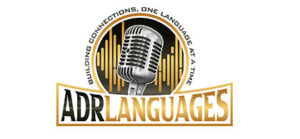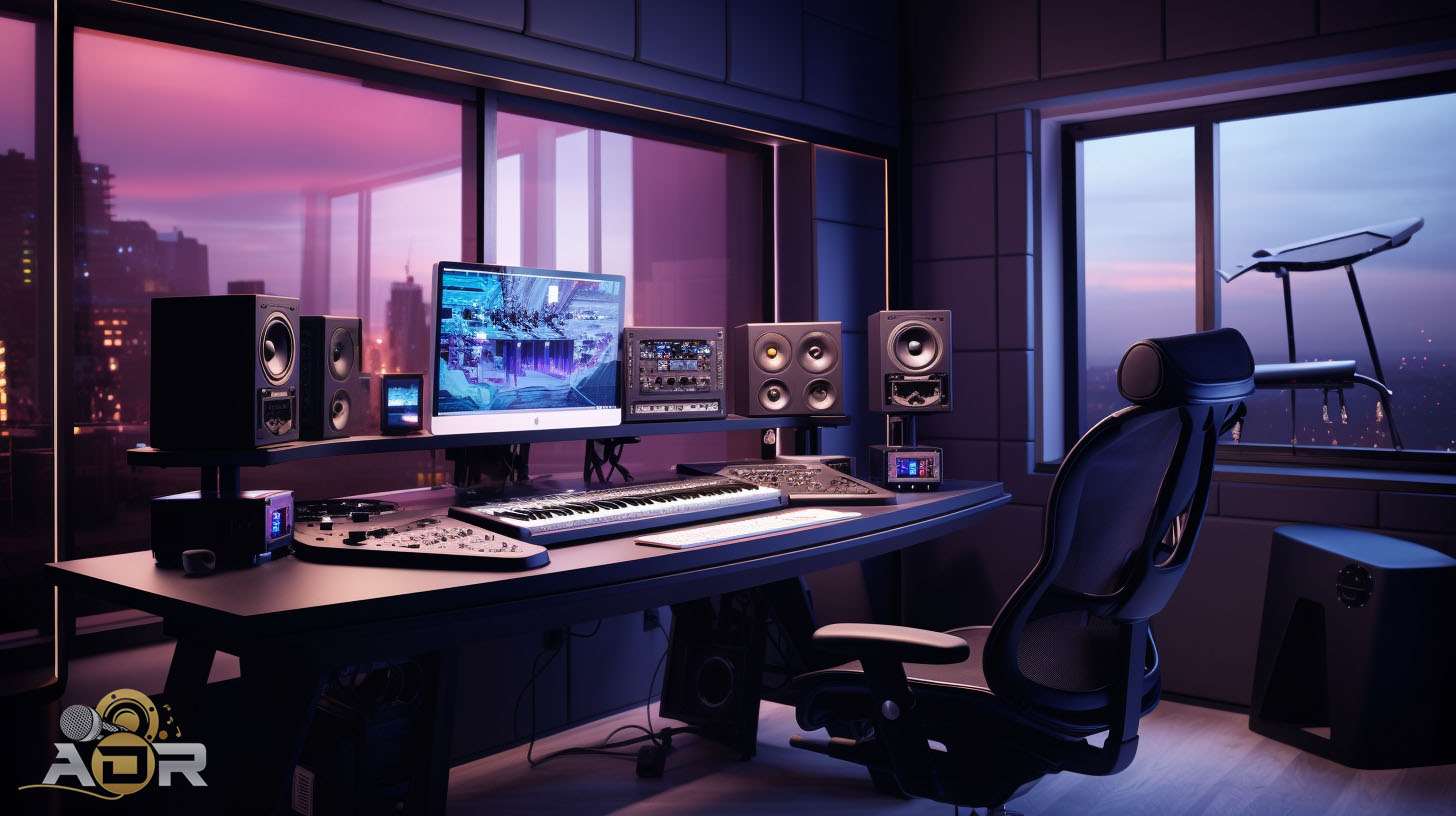Looking for the perfect voiceover microphone for 2023? You’re in luck!
With options like the Audio-Technica AT2020USB, Electro-Voice RE20, Neumann TLM 103, Shure SM7B, Blue Yeti X, and Rode PodMic, there’s something for everyone.
These microphones offer iconic broadcast sound, excellent sound quality, and great value.
Whether you’re a professional or just starting out, you’ll find a microphone that suits your needs and budget.
So, get ready to elevate your voiceover game and find your perfect match in the world of microphones.
Let’s dive in!
Quick Takeaways From Voiceover Microphones in 2023:
- The Shure MV7 is a highly recommended microphone for podcasters and voice over artists, offering great value and excellent sound quality with both USB and XLR options available.
- The Rode PodMic is a high-quality microphone with a competitive price point, making it a good choice for spoken word applications in voice over and podcasting.
- The Shure SM7B is an iconic microphone known for its broadcast sound and excellent noise rejection, making it suitable for professional broadcasters, podcasters, and voice over artists.
- When choosing a microphone for voice-over work, condenser microphones like the Neumann TLM 103 and the Sennheiser MKH 416 are recommended for their clear and detailed sound, as well as the Rode NT1 and MXL V67G for budget-friendly options.
Best Voice Over Microphones
If you’re in search of the best voice-over microphone for your needs, you’ll want to consider the following options:
- Audio-Technica AT2020USB: This microphone is a popular choice for its USB connectivity and high-quality sound.
- Shure MV7X XLR Podcast Microphone: Offering excellent value with its XLR connection and detailed sound.
- Neumann TLM 102 Condenser Microphone: Known for its warm and clean sound.
- Blue Yeti USB Microphone: Affordable and easy to use.
- Electro Voice RE-20: An iconic option with its all-purpose capabilities and broadcast sound.
Audio-Technica AT2020USB
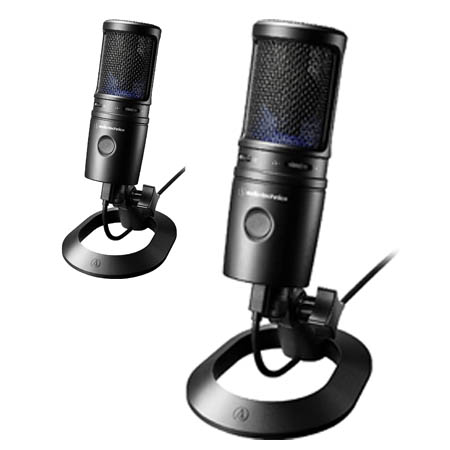
To get the best voiceover quality, you should consider the Audio-Technica AT2020USB microphone. It has received positive reviews for its natural sound and ease of use. The microphone ensures superb audio quality with its high-quality A/D converter and 16 bit, 44.1/48 kHz sampling rate.
The headphone jack with volume control allows you to monitor the microphone signal with no delay, giving you greater control over your recordings. The high-output internal headphone amplifier delivers superior clarity and musical detail, enhancing your overall recording experience.
The AT2020USB microphone is compatible with Windows 8.1, Windows 10, and Mac OS X or later, making it versatile for different operating systems. It comes with a pivoting stand mount, soft protective pouch, tripod desk stand, and a 10-foot USB cable for added convenience.
Product Specs:
- Brand: Audio-Technica
- Model: AT2020USB PLUS
- Hardware Platform: PC
- Special Features: Volume Control
- Color Screen: No
- Microphone Format: Microphone Only
- Voltage: 240 Volts
- Power Source Type: Corded Electric
- Signal-to-noise ratio: 74 dB
- Connector Type: USB
Pros:
- Natural sound quality
- Easy to use
- High-quality A/D converter
- Headphone jack with volume control
- High-output internal headphone amplifier
Cons:
- No adjustable setting software
- May pick up background noises without proper settings
- Not meant for gaming purposes
Shure MV7X XLR Podcast Microphone

The Shure MV7X XLR Podcast Microphone is a popular choice for podcasters and content creators. Its versatility and high-quality sound make it a great option for beginners and experienced creators alike. The microphone’s sturdy construction ensures durability, while its ability to capture lows and handle various tasks with clarity sets it apart from others. Although some users prefer the SM7B, the MV7X XLR is still considered a strong contender. It is widely used in portable gear setups and studios for vocals, showcasing its versatility. While it may pick up some buzz, the overall sound quality is good.
Product Specs:
- XLR connectivity
- USB connectivity (with an additional accessory)
- Adjustable microphone stand
- Built-in headphone output
Pros:
- Versatile and high-quality sound
- Easy to use
- Sturdy construction
- Captures lows effectively
- Suitable for podcasting, streaming, and music tasks
Cons:
- Some users prefer the SM7B
- May pick up some buzz
Neumann TLM 102 Condenser Microphone
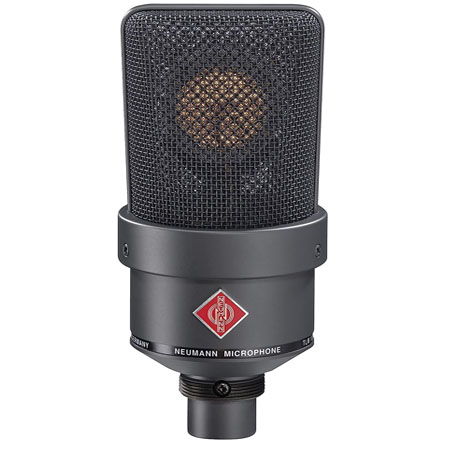
You should consider the Neumann TLM 102 condenser microphone for its compact design, high maximum sound pressure level, and slight presence boost that enhances vocals in the mix.
This microphone is perfect for those who want to feel like they belong in the world of professional audio recording.
The compact design makes it easy to transport and set up, while the high maximum sound pressure level ensures that you can capture even the loudest performances without distortion.
The slight presence boost above 6 kHz adds a touch of clarity and sparkle to your vocals, making them stand out in the mix.
With the Neumann TLM 102, you can feel confident that your voice will shine and that you are using a microphone that is trusted by professionals.
Product Specs:
- Large-diaphragm microphone with cardioid directional characteristic
- Compact Neumann design
- Very high maximum sound pressure level (144 dB)
- Slight presence boost above 6 kHz
Pros:
- Compact design for easy transport and setup
- High maximum sound pressure level for distortion-free recordings
- Slight presence boost enhances vocals in the mix
Cons:
- Some users find the microphone to be small and toy-like
- Sound quality may be perceived as flat by some users
- Price may be considered high by some, with expectations of better performance from Neumann.
Blue Yeti USB Microphone

The Blue Yeti USB microphone offers a unique positionable design that optimizes sound quality. With its sleek appearance and powerful performance, this microphone is the perfect companion for anyone looking to belong in the world of voiceover.
The custom three-capsule array ensures crystal clear and powerful sound, while the four pickup patterns provide versatility for various recording options. The onboard audio controls make adjustments a breeze, allowing you to focus on your creative process. Plus, the Blue VO!CE software enhances effects and provides HD audio samples, taking your voiceover game to the next level.
However, it’s important to note that some users have mentioned the mic being heavy and bulky, and the USB port and cord being fragile. Despite these minor drawbacks, the Blue Yeti USB microphone remains a top choice for beginners and intermediate users alike.
Product Specs:
- Custom Three-Capsule Array
- Four Pickup Patterns
- Onboard Audio Controls
- Blue VO!CE Software
- Plug n Play on Mac and PC
Pros:
- Unique positionable design
- Crystal clear and powerful sound
- Versatile recording options
- Easy adjustments with onboard audio controls
- Enhanced effects and HD audio samples with Blue VO!CE software
Cons:
- Heavy and bulky
- Fragile USB port and cord
Electro Voice RE-20
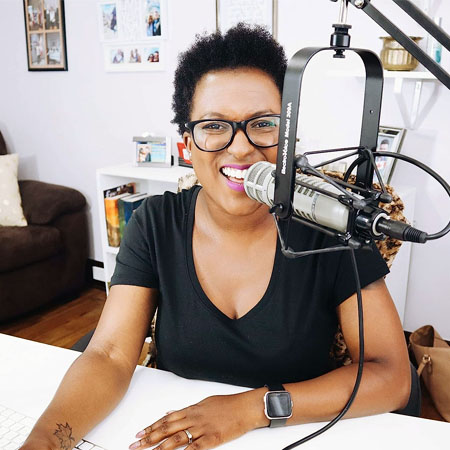
With its smooth, natural sound and reliable performance, the Electro Voice RE-20 is a popular choice among broadcasters and podcasters. This microphone is designed to give you that classic FM radio voice, with its smooth, controlled sonic character. Its Variable-D technology minimizes the proximity effect, allowing you to move closer to the microphone without sacrificing sound quality. The RE-20 also features a true cardioid polar pattern, which means it picks up sound directly in front of the microphone while rejecting unwanted sounds from the sides and rear.
The Electro Voice RE-20 has a voice-tailored frequency response, making it ideal for vocals. It has exceptional clarity and definition, even when handling high sound pressure levels. Its rugged steel construction ensures durability, while its low handling noise keeps unwanted vibrations to a minimum. The included SSM-BC10 shock mount and broadcast arm provide additional stability and versatility.
Product Specs:
- Cardioid dynamic microphone
- True cardioid polar pattern
- Voice-tailored frequency response
- Rugged steel construction
- Low handling noise
Pros:
- Smooth, natural sound
- Reliable performance
- Minimizes proximity effect
- Rejects unwanted sounds
- Exceptional clarity and definition
Cons:
- May require additional equipment for mounting
- Not ideal for recording instruments
- May be expensive compared to other options
Factors to Consider When Buying A Voice Over Microphone
When choosing a microphone for voice over work, there are several key points to consider.
Firstly, your budget will determine the range of options available to you, so it’s important to set a realistic budget beforehand.
Secondly, the polar pattern of a microphone determines how it picks up sound. There are options ranging from cardioid (picks up sound from the front) to omnidirectional (picks up sound from all directions).
Thirdly, the frequency response refers to the range of frequencies that the microphone can capture accurately. This is an important consideration to ensure that your voice is captured clearly.
Next, sensitivity measures how well the microphone converts sound into an electrical signal. This is important for capturing the nuances and details of your voice.
Lastly, the noise floor represents the level of background noise that the microphone picks up. It’s important to choose a microphone with a low noise floor for clean recordings.
Considering these factors will help you find the right microphone for your voice over work.
Budget
If you’re on a tight budget, the Rode NT1 and MXL V67G are both great options for voice-over work. When considering factors for buying a voice-over microphone, it’s important to think about the connection type.
USB microphones are convenient and easy to use, while XLR microphones offer professional audio quality.
In terms of microphone sensitivity, the Rode NT1 and MXL V67G perform well, capturing clear and detailed sound. When it comes to durability, both microphones are known for their sturdy build, ensuring they can withstand regular use.
Lastly, let’s discuss the polar pattern. The Rode NT1 features a cardioid pattern, which focuses on capturing sound from the front while minimizing background noise. The MXL V67G also has a cardioid pattern, making it suitable for voice-over work in controlled environments.
Overall, these budget-friendly options provide excellent performance for aspiring voice-over artists.
Polar Pattern
The Rode NT1 and MXL V67G, both budget-friendly options, have cardioid polar patterns that focus on capturing sound from the front while minimizing background noise.
Here are some things to consider when it comes to polar patterns:
- Pros and cons: Cardioid polar patterns are great for voice-over work as they help to isolate your voice and reduce unwanted noise. However, they may not be ideal for recording multiple voices or capturing ambient sound.
- Recording techniques: To get the best sound quality, make sure to position the microphone directly in front of your mouth, about 6-12 inches away. Experiment with different angles to find the sweet spot for your voice.
- Microphone placement: Avoid placing the microphone too close to your mouth as it can result in plosive sounds. Use a pop filter or foam windscreen to reduce these unwanted noises.
- Microphone accessories: Consider investing in a microphone stand or boom arm to ensure stability and ease of use during recording sessions. A shock mount can also help reduce vibrations and handling noise.
Frequency Response
Now that you understand the importance of polar patterns in microphone selection, let’s dive into another crucial factor: frequency response.
The frequency response of a microphone refers to its ability to capture and reproduce different frequencies of sound. This characteristic is vital in voiceover recording because it directly affects the quality of your recordings.
Different microphone models have different frequency response curves, which can impact the way your voice sounds. Understanding the frequency range suitable for voiceover applications will help you choose the right microphone.
When comparing microphone models, pay attention to their frequency response graphs to see how they handle different frequencies. To optimize frequency response for voiceover recordings, consider using equalization techniques to enhance or adjust specific frequencies that may need improvement.
Sensitivity
When choosing a microphone for your voiceover recordings, you’ll want to consider the sensitivity of the microphone to ensure it can accurately capture the nuances of your voice. The sensitivity of a microphone refers to its ability to convert sound waves into an electrical signal. High sensitivity microphones are beneficial because they can pick up even the slightest variations in your voice, resulting in a more detailed and dynamic recording. However, there are pros and cons to using high sensitivity microphones. On one hand, they can capture the full range of your voice, but on the other hand, they may also pick up background noise or unwanted sounds. To choose the right sensitivity for your voiceover, it’s important to consider your recording environment and the level of control you have over background noise. Techniques for controlling sensitivity include adjusting the microphone’s gain, using a pop filter, and positioning the microphone at an optimal distance from your mouth. Ultimately, the impact of sensitivity on sound quality in voiceover recordings depends on finding the right balance that suits your unique voice and recording needs.
| Pros of High Sensitivity Microphones | Cons of High Sensitivity Microphones |
|---|---|
| Accurately captures nuances of voice | May pick up background noise |
| Provides detailed and dynamic recordings | Requires careful control of recording environment |
| Enhances sound quality and clarity | May require additional post-processing |
| Allows for greater flexibility in recording techniques | May be more prone to feedback or distortion |
| Captures subtle vocal inflections and emotions | Requires more precise microphone technique |
Noise Floor
One important consideration in microphone selection is the impact of background noise on voiceover recordings. To ensure clear and professional-sounding voiceovers, it is crucial to understand the concept of the noise floor.
The noise floor refers to the level of unwanted background noise present in a recording. To minimize the noise floor, proper microphone placement is essential. Positioning the microphone close to your mouth and away from noisy sources can help reduce unwanted noise.
Additionally, considering room acoustics is important as well. A well-treated room with sound-absorbing materials can help minimize reflections and reverberations that contribute to the noise floor.
Furthermore, using gain control and audio interface options can also help in reducing background noise and achieving optimal recording levels.
Connection Type
If you’re looking for a microphone for your voice-over work, you’ll want to consider the connection type that best suits your needs. Here are some key points to help you make an informed decision:
- Pros and cons of XLR vs USB connection for microphones: XLR offers professional audio quality and is ideal for studio setups, but requires an audio interface. USB is convenient and easy to use, but may not offer the same level of sound quality.
- How to choose the right microphone for your budget: Consider your budget and prioritize features that are most important to you, such as sound quality, durability, and compatibility with your equipment.
- The importance of polar patterns in voice-over microphones: Different polar patterns, such as cardioid or omnidirectional, affect how the microphone picks up sound. Choose a polar pattern that suits your recording environment and desired sound.
- Factors to consider when buying a voice-over microphone: Consider factors like frequency response, sensitivity, and self-noise. These factors will impact the overall sound quality and performance of the microphone.
- The impact of frequency response on microphone selection: Frequency response determines how well a microphone captures different frequencies. Consider the frequency range of your voice and the type of sound you want to achieve when selecting a microphone.
Durability
To ensure your microphone can withstand the rigors of your voice-over work, prioritize durability when making your selection. You need a microphone that can handle long hours of recording and traveling without breaking down. Look for a microphone with a rugged design and build quality that will stand the test of time. Durability and longevity should be top priorities to ensure that your investment lasts for years to come. A reliable microphone will give you peace of mind and allow you to focus on delivering your best performances. Consider the table below for a quick comparison of some durable microphones that are highly recommended for voice-over work:
| Microphone | Durability | Longevity | Build Quality |
|---|---|---|---|
| Electro-Voice RE20 | High | High | Excellent |
| Shure SM7B | High | High | Exceptional |
| Neumann TLM 103 | Moderate | High | Very Good |
| Sennheiser MKH 416 | High | High | Excellent |
| Rode NT1 | High | High | Very Good |
Choose a microphone that meets your specific needs and provides the durability and reliability you require for your voice-over work.
Frequently Asked Questions
What is the price range for the recommended voice-over microphones?
When it comes to choosing a voice-over microphone, the price range varies depending on your budget. However, it’s important to prioritize factors like microphone selection, sound quality, durability, brand reputation, and customer reviews to ensure you get the best value for your money.
Are there any specific microphone features that enhance voice-over recordings?
When selecting a microphone for voice-over work, consider microphone selection, recording environment, mic placement, pop filter usage, and audio editing techniques. These features enhance the quality and clarity of your voice recordings, ensuring professional results.
Can the recommended microphones be used for other purposes besides voice-over work?
Yes, the recommended microphones can be used for other purposes besides voice-over work. They offer alternative applications and versatility options. You can find performance comparisons and compatibility considerations in user reviews.
Are there any additional accessories or equipment needed to connect the microphones to a computer?
To connect the microphones to your computer, you will need audio interfaces, cables, and adapters. These accessories ensure computer compatibility and allow you to record using recording software.
Are there any maintenance or care tips for the recommended voice-over microphones?
To ensure the longevity of your voice-over microphone, it’s essential to follow maintenance tips. Clean it regularly using a soft brush or cloth, prevent damage by avoiding excessive handling, and store it in a protective case to extend its lifespan.
In A Brief ADR Summary…
So there you have it, the best voiceover microphones for 2023.
Whether you’re a professional voice artist or just starting out, these options offer a range of features and prices to meet your needs.
From the iconic sound of the Electro-Voice RE20 to the versatility of the Shure MV7, there’s something for everyone.
Just remember, when choosing your microphone, consider your specific requirements and budget.
As the saying goes, “the right microphone can be the key that unlocks the door to your voiceover success.”

